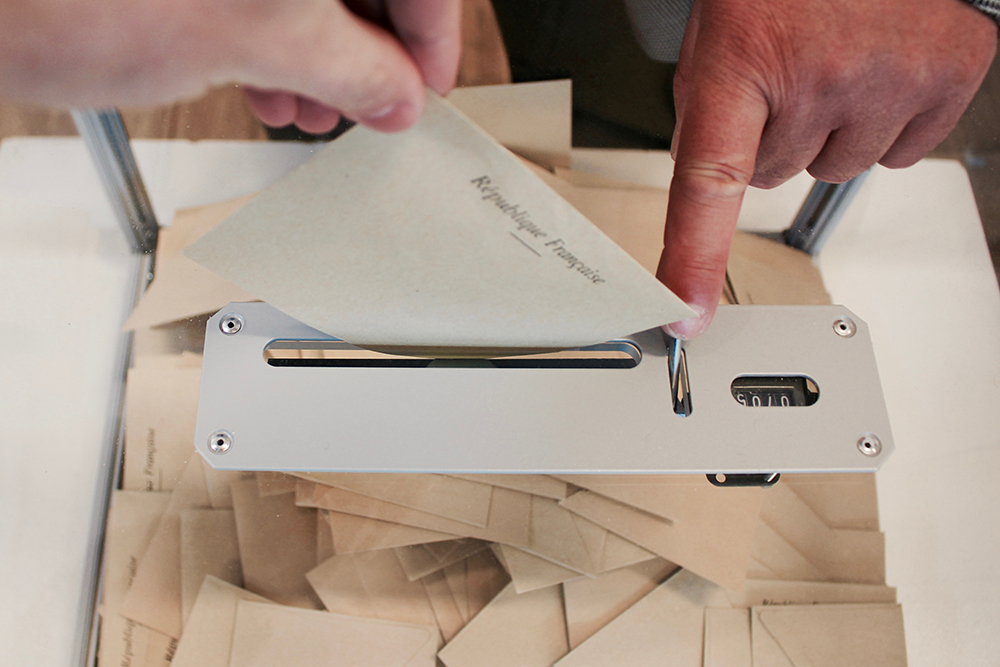
Believe it or not, its five years since Porsche lopped two cylinders from its base Cayman, tacked on a 718 badge to evoke some history and ignited the bottom half of the internet in the process. A lot has happened since early 2016 a lot but suffice to say a slightly grumbly sounding Porsche quickly became a minor inconvenience rather than an outright hate crime. Tiddly 2.0s have sat amidst the majority of Caymans sold since, even now the option of a flat-six has returned further up the range.
Toyota is expecting a similar result for its new GR Supra 2.0 for the comments section incandescence to subside and 60 per cent of Supras sold in Britain to have just four cylinders. Given how irked the 2JZ diehards were by a BMW-sourced 6cyl, its hard to see how this 254bhp 4cyl turbo shared with the new BMW 128ti hot hatch as well as a mid-range Z4 can possibly do any more damage.
Then theres the Jaguar F-Type P300, a slightly unemotive suffix informing us this one has 300PS or the same 296bhp as the Porsche produced by a 2.0-litre four-cylinder turbo shared with the XE saloon. It launched almost four years ago as the least skittish and most nimble F-Type yet, and its here in facelifted form. But weighing in at over 1.5 tonnes its the porkiest (and slowest) car here, as well as the most expensive the idea of a First Edition trim feels a bit of a stretch on a car thats basically seven years old, and it helps lift the price almost £20k north of the Supras as tested. A tough battle lies ahead.
Were all magpies at heart, so lets start with the newest, shiniest one. The car whose Ice Grey metallic is the least austere of a colour palette for this test otherwise reflective of the national mood upon hearing the phrase 7pm briefing. The Supra easily wears the most eye-grabbing shape of our group, too. Whether its pretty is a subjective matter, but it melts the design conservatism of the Cayman into the misty backdrop. Will it and its numerous fake vents age well? Perhaps not. But for now, and likely the duration of a three-year lease deal, its as visually arresting as cars three times its price.
So when you poke the starter button and a hot hatchs engine burbles into life, it comes as somewhat of a shock. The Supra 3.0 stands out in a competitive field as a brooding, muscular sort, trading outright dynamism for the demeanour of a shrunken GT. But slicing off two cylinders has saved 100kg and right at the front axle, doing wonders for weight distribution. While it takes a step back in terms of character, it strides forward in athleticism.
The Supra easily wears the most eye-grabbing shape of our group
Heres a Supra youll confidently push hard into corners, with an incisive front end followed by a rear thatll happily and accessibly cut shapes if youve loosened the DSC. Which I think you will. Theres still a GT car vibe pervading the whole thing, not least because its comparatively dinky 18in wheels give it the least fussy ride of our trio, but theres a sense of humour running through the Toyota. The engine sounds a bit reedy when really revved but with eight short gear ratios and peak torque from 1,550 to 4,400rpm, you can move pretty briskly without having to work it overly hard.
Leave decision making to the gearbox and itll slink up to sixth gear in 30mph zones, though take charge yourself and this eight-speed auto is keen, feeling more at home here than a similar setup does in the new M3. Indeed, plenty of the German seasoning on this car simply makes it more competent the stability controls midway setting mimics M Dynamic mode and the touchscreen system adopts all the most logical bits of iDrive while ignoring the ghastly gesture control.
It feels like a smart little sports car, but how does it compare with the benchmark? If youre holding your breath in hope of a dramatic plot twist then Im sorry to inform you the Cayman just feels as instantly brilliant as it always does. It probably scores highest in the engine start-up test, too: at idle, it does a decent impression of a Porsche flat-six, and if you keep the sports exhaust off, that sensation largely continues with speed. Its boomy where a six would sing, but what irks more is the response of the engine, and the fact bugger all seems to happen below 3,000rpm. Thus the lightest and quickest car of the group on paper actually feels the most sluggish in the real world unless youre working its twin-clutch gearbox hard.
The PDKs lightness of touch illuminates this engines duller traits and given how much it likes revs, Id heartily suggest being in the mere 15 per cent who specify this car with a six-speed manual, saving £2,000 in the process. Youll be changing gear a lot, so you might as well enjoy pleasurable pulses up and down your forearm as you do it (worth noting that this is the only car here offering a choice of transmissions, too). Its flat-four manages to sound and feel relatively expensive in this company, too, the 718 getting the only bespoke engine of our group while being the only one to place it behind the driver.
Which means it cant help but be the sharpest car to drive. A slightly scarred Cayman is still a Cayman; sprain Lionel Messis ankle and hell continue to jink through most defences with nary a concern. The steering feel is broadcast in UHD beside the others, and its slim 30kg weight benefit over the Supra feels larger in reality. My experience of running a base (manual) 718 in the Top Gear Garage suggests youll make peace with that engine in mere weeks, unable to stem the tidal wave of satisfaction that comes from a car so flipping good to drive also possessing two boots with more combined luggage space than a Golf. Its got the highest quality and most ergonomically pleasing interior, too, though its the least GT of our trio, with a heck of a lot of tyre roar made all the more evident by the fact that the engine sits below 2,000rpm on the motorway like the Supras and F-Types.
If its serenity you crave, then the Jaguar is the best place to find it. Mark its talents with a purely objective score card and it comes up well lighter and more agile than the wild F-Types that have gone before it, with its cuddlier torque figure leading to a notably more trustworthy chassis beneath. Its just a bit undramatic as a result, not helped by the plainest engine here and the least appealing sound augmentation when the binocular buttons lit. It handles so neutrally whatever you throw at it, which ought to be commended this is a car that appears to neither understeer nor oversteer, exhibiting utmost traction and precision. Were just used to Jags with more swagger. If you want a dose of history without the histrionics, though, its perfect; that E-Type inspired cab-back stance is as delectable as ever.
Believe it or not, we first saw the F-Type Coupes shape 10 years ago on the Jaguar C-X16 concept. It has aged wonderfully, and when this P300 sat beside a highlighter-yellow BMW M4 outside my flat, the neighbours could only coo over the cloudy grey Brit. Its joyously unadorned next to the slashy, fussy Supra, suggesting itll be the far more appealing object in another decades time.
The drama continues inside, with the most visually interesting cockpit of this group. Its usually a bit naff using the word cockpit to describe an interior, but the Jags joystick gear selector, wraparound console and slender windscreen make it hard not to indulge. All of which is a positive spin on how the heaviest, widest car here is also the most claustrophobic. Quite a trick, and one which makes it the hardest to place down a narrow B-road.
But its the easiest to place last in this test. Its got surface-deep star quality this is a £100k V8 sports car punching down, whereas the other two find their roots at half the money but pressing the starter button nibbles away at the illusion just a little too much. Its the car most affected by its cylindectomy. Jaguars fully electric by 2025 announcement earlier this year immediately placed a sell-by date on the petrol F-Type and if youve hung on this long to buy one, wouldnt you rather have a lightly used V8 and see it out with a bang?
The other two are much closer together. Surprisingly so: the gap between four-cylinder Supra and Cayman is significantly narrower than when you throw the full-fat six-cylinder versions in the ring. Is that because the Toyota has become smarter, or because the Porsche has become less mesmerising? The truth is a combination of the two, but theres no doubting that if youre sold on the looks and want something fervently different to the crowd, the Supra wears its simpler 2.0 form well, even if its lease saving over a 3.0 might be as slim as £20 a month.
The Cayman, though, is insurmountable. Sometimes it seems a little studious a peculiar mix of class swot and sports team captain where the Supras happier to sacrifice some grades to get into a bit of mischief. But ultimately the 718 is a triple threat: its the best to drive, nicest to sit in and easiest to own, the latter a true achievement for the only mid-engined car present and proof that the other two could perhaps work their more traditional layouts better. Porsche wins again, but by a smaller margin than it has become accustomed to.
Porsche 718 Cayman PDK 8/10£46,790 otr/£57,817 as tested2.0 4cyl turbo, 296bhp, 280lb ft0-62 4.7secs, 170mph31.4mpg, 203g/km1365kgRWD, 7spd twin-clutch
Toyota GR Supra 2.0 7/10£45,995/£46,7052.0 4cyl turbo, 254bhp, 295lb ft0-62 5.2secs, 155mph38.7mpg, 167g/km1395kgRWD, 8spd auto
Jaguar F-Type P300 6/10£54,510/£66,3352.0 4cyl turbo, 296bhp, 295lb ft0-62 5.7secs, 155mph29.8mpg, 216g/km1520kgRWD, 8spd auto
Photography: Jonny Fleetwood

 Subscribe to The Daily Telegraph to get unrestricted digital access, home paper delivery, Apps for iPad and Android, member only +Rewards and much more…
Subscribe to The Daily Telegraph to get unrestricted digital access, home paper delivery, Apps for iPad and Android, member only +Rewards and much more…  Do you compost or buy second hand?
Do you compost or buy second hand?  The Newsreader review: Exhilirating Australian prestige drama
The Newsreader review: Exhilirating Australian prestige drama  Local shares fell on Friday as investors make last-minute adjustments to their portfolios ahead of the main index’s rebalancing, while unease over rising infections grows.
Local shares fell on Friday as investors make last-minute adjustments to their portfolios ahead of the main index’s rebalancing, while unease over rising infections grows. 


